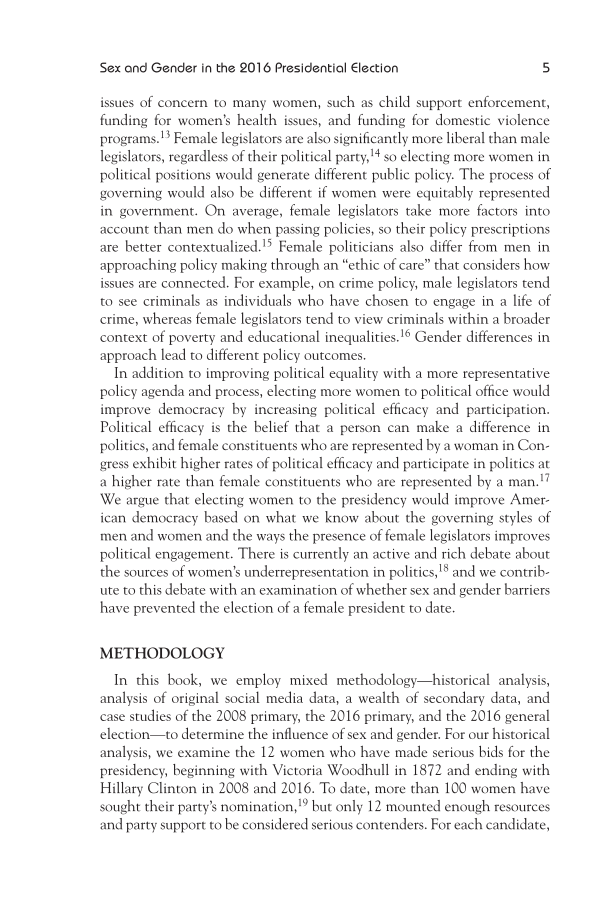5 Sex and Gender in the 2016 Presidential Election issues of concern to many women, such as child support enforcement, funding for women’s health issues, and funding for domestic violence programs.13 Female legislators are also significantly more liberal than male legislators, regardless of their political party,14 so electing more women in political positions would generate different public policy. The process of governing would also be different if women were equitably represented in government. On average, female legislators take more factors into account than men do when passing policies, so their policy prescriptions are better contextualized.15 Female politicians also differ from men in approaching policy making through an “ethic of care” that considers how issues are connected. For example, on crime policy, male legislators tend to see criminals as individuals who have chosen to engage in a life of crime, whereas female legislators tend to view criminals within a broader context of poverty and educational inequalities.16 Gender differences in approach lead to different policy outcomes. In addition to improving political equality with a more representative policy agenda and process, electing more women to political office would improve democracy by increasing political efficacy and participation. Political efficacy is the belief that a person can make a difference in politics, and female constituents who are represented by a woman in Con- gress exhibit higher rates of political efficacy and participate in politics at a higher rate than female constituents who are represented by a man.17 We argue that electing women to the presidency would improve Amer- ican democracy based on what we know about the governing styles of men and women and the ways the presence of female legislators improves political engagement. There is currently an active and rich debate about the sources of women’s underrepresentation in politics,18 and we contrib- ute to this debate with an examination of whether sex and gender barriers have prevented the election of a female president to date. METHODOLOGY In this book, we employ mixed methodology—historical analysis, analysis of original social media data, a wealth of secondary data, and case studies of the 2008 primary, the 2016 primary, and the 2016 general election—to determine the influence of sex and gender. For our historical analysis, we examine the 12 women who have made serious bids for the presidency, beginning with Victoria Woodhull in 1872 and ending with Hillary Clinton in 2008 and 2016. To date, more than 100 women have sought their party’s nomination,19 but only 12 mounted enough resources and party support to be considered serious contenders. For each candidate,
Document Details My Account Print multiple pages
Print
You have printed 0 times in the last 24 hours.
Your print count will reset on at .
You may print 0 more time(s) before then.
You may print a maximum of 0 pages at a time.

































































































































































































































